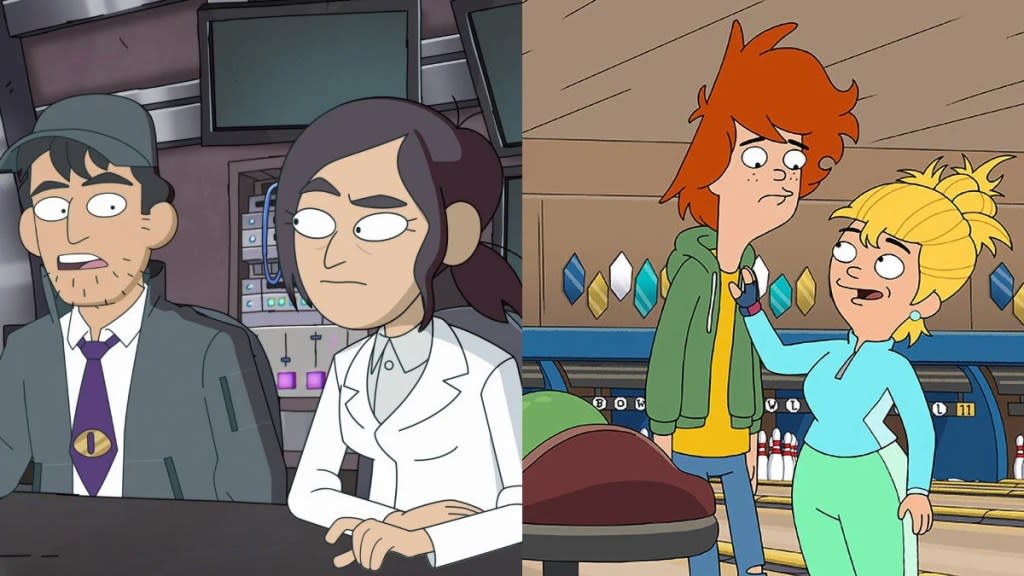It’s Time to Bring Animation Jobs Back Home | PRO Insight

“In the good old days… It took 500 artists five years to make a world class animated movie. I think it won’t take 10% of that… that will likely mean drastic cuts in the number of people needed to produce the art forms.”
After the actors strike, these were certainly not inspiring comments from Jeffrey Katzenberg, the co-founder of DreamWorks Animation, about an industry that has already weathered more than its fair share of cuts. And those cuts were before AI was on the table.
We have a different take. Our take does not refer to a time period when few storytellers were able to secure work on these projects with long production timetables, and the majority of animation jobs were shipped overseas, as “the good old days.” Katzenberg failed to mention that fact: Over the past two decades, the entertainment industry in the U.S. has shipped nearly 80% of animation jobs overseas to countries such as South Korea, India, Philippines, Mexico, and Canada.
This process began back in the 1970’s when Saturday morning cartoons were at their cultural peak, and it made sense to outsource to keep up with consumer demand, and the resulting ad based revenue. It no longer makes sense for a host of reasons.
The U.S. became an animation powerhouse back in the 1930’s when Disney changed the game with the invention of the multiplane camera, which automated depth perception (aka the parallax process) by enabling the movement of foreground and background objects at different speeds and directions. This brought unprecedented efficiencies to animation and led to the creation of the animation industry as we know it today. In addition to production efficiencies and visual improvements that made story worlds richer, the multiplane camera brought with it new jobs.
We now have the chance to bring those jobs back and regain our standing as a global leader in animation. Whereas Katzenberg believes that AI is coming for jobs, we believe artificial intelligence is the technology that will empower more creators to participate in the medium, generating original intellectual property in a risk-averse industry climate, and ultimately create more jobs, not too dissimilar to what our friend the multiplane camera did.
While the strikes produced some notable gains for writers and talent (even though they frankly waited too darn long for it to end), those gains will be reaped by the lucky few who are steadily employed in projects and can say they earn a living from their creative pursuits, which is a small percentage of union membership. The gains also come with a cost for creators and consumers. Many now worry that the industry will tackle the increased labor costs with further cuts to production, compounding the pre-existing problems for creators.
We’ll find ourselves back in strike territory in another three years when contracts again come up for renewal if we don’t address the underlying problems: for studios, the imbalance between streaming content costs and subscription/ad revenue; for creators, dwindling opportunities to have their projects produced; and for both studios and creators, too many industry jobs being outsourced to other countries. Animation sits at the epicenter of this venn diagram of industry challenges.
In fact, the animation industry was the canary in the coal mine experiencing challenges that were soon faced by the broader industry. Over the past two years, the animation sector bore the brunt of industry cuts trying to address the revenue shortfalls. Post strike, the outlook doesn’t look much different for the industry. Consider just a few of the many cuts to animation in the past year. In June, Pixar released 75 employees. In October, Dreamworks Animation laid off 70 employees, issuing a statement saying they had additional cost-cutting goals that would be addressed by relying more on third-party studios. And in November, Netflix Animation laid off one third of its feature unit, around 50 employees. These are just a fraction of widespread cuts in the industry that also included the complete cancellation of many animated projects such as “Inside Job” (Netflix), “Duncanville” (FOX) and “The Owl House” (Disney+) to name a few.
Animation is also the entertainment segment poised to address these problems by leveraging AI. With a few incumbent studios making a few mega hits, animation projects in television and film have historically been costly and time consuming. And animation is a medium that’s only been accessible by a handful of storytellers. Consider that one episode of “Family Guy” at 22 minutes costs more than $2 million and takes nine to 12 months to produce. But that’s no longer the case. AI can significantly reduce the cost and increase the speed of production, paving the way for more projects and more jobs for animators, aspiring animators and storytellers, right here in the US.
Using AI as a production tool, we’ve been able to cut costs by 80% and reduce time from concept to creation by 90%. This is empowering people with great stories to tell the ability to bring those stories to life. AI-powered studios can reverse the outsourcing trend of the past several decades and bring jobs back to the US by leveraging a highly skilled and creative U.S. workforce eager to create content, and match that with an industry eager for new hit IP.
If we choose to embrace AI as a tool to supercharge human creativity and productivity, I believe it will be as powerful an innovation as the multiplane was proved to be, catalyzing an animation renaissance that gives birth to a new generation of original worlds that already exist in the imaginations of storytellers and are yearning to be told. It’s time to unlock those stories and bring the animation crown back to its rightful home.
The post It’s Time to Bring Animation Jobs Back Home | PRO Insight appeared first on TheWrap.


